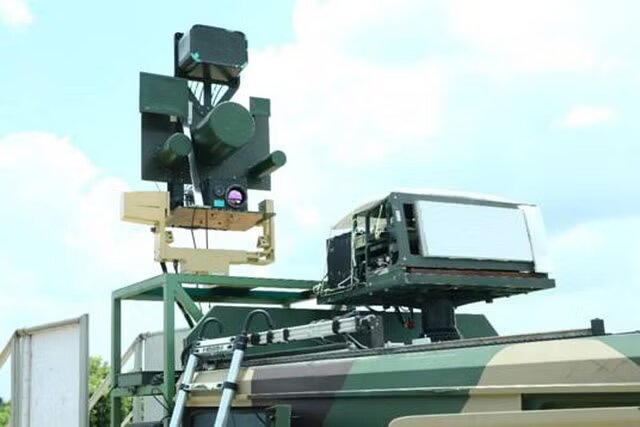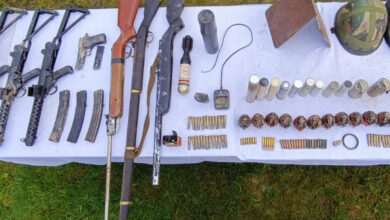Indian Army Deploys Indigenous Anti-Drone System Along China Border To Counter Unmanned Aerial Threats

- The Indian Air Force (IAF) recently put out the first bids for 10 anti-swarm drone systems based on kamikaze drones
- India is making progress on buying anti-drone systems with lasers ranging in power from 2 kW to 10 kW
Seven new homegrown Integrated Drone Detection and Interdiction Systems (IDD&IS) have been given to the Indian Army to be used along the northern border with China.
Both jamming (soft kills) and lasers (hard kills) are used in these devices to stop unmanned aerial vehicles (UAVs).
It can find things up to 8 kilometers away, so the IDD&IS can jam drones within 2 to 5 kilometers and kill them at over 800 meters.
These systems were made by the Defence Research and Development Organization (DRDO) and Bharat Electronics. They are the first Mark-1 versions that the Army Air Defence has bought.
The IDD&IS will have better interception ranges in future models.
The present systems are good at finding drones with low radar cross-sections and killing them with both soft and hard kill features that are built in.
Drones have become more important in recent battles between Armenia and Azerbaijan and between Russia and Ukraine. This is why the Indian military has bought a wide range of UAVs from both inside and outside of India.
Different types of successful anti-drone systems are being put in place. These include laser-based DEWs and jamming, spoofing, and blinding systems that can break drones’ satellite or video command-and-control links.
The armed forces have already signed a number of contracts with them, and more are on the way.
The Indian Air Force (IAF) recently put out the first bids for 10 anti-swarm drone systems based on kamikaze drones, 10 anti-swarm drone systems based on mobile micromunitions, and 100 to 200 C-UAS (counter unmanned aircraft systems) that can be placed on vehicles.
India is making progress on buying anti-drone systems with lasers ranging in power from 2 kW to 10 kW, even though drone and counter-drone development has been held up in the past.
DRDO is also making progress on developing DEWs. They want to reach power levels of 30 to 50 kilowatts as part of a long-term plan to improve the weapons’ range, accuracy, and operating efficiency.







Facebook Comments